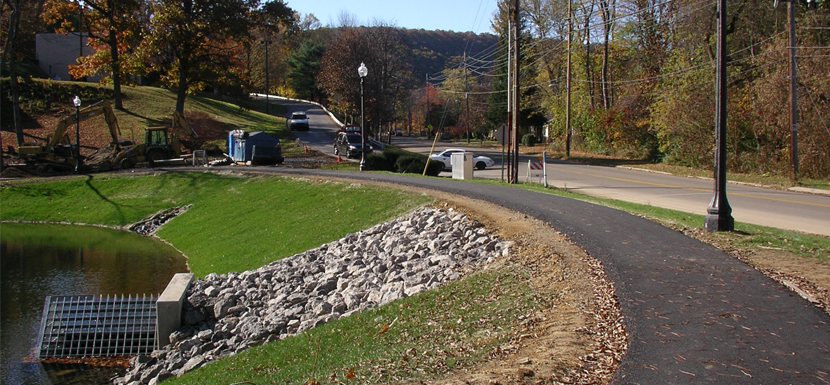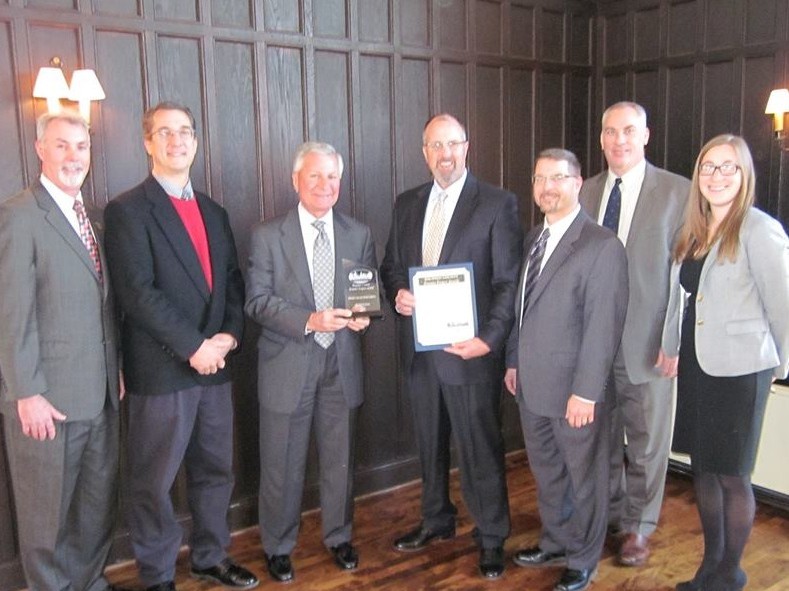
This article was published in the Winter 2014 issue of the Township Engineer newsletter, as produced by the PA State Association of Township Supervisors.
Since the signing of Senate Bill 1261 (Act 68 of 2013) last September, many townships have been discussing the benefits and feasibility of using an authority to address stormwater issues versus continuing to use their established policies, practices, and funding sources. As you might imagine, there is no single, simple answer to this question. Like many other aspects of township administration, each community’s needs are unique, and any one-size-fits-all approach seldom does.
One reason for this is that stormwater management is a function of each township’s location in the watershed, its unique topography and land use, and its demographics. Often, the existing stormwater facilities are passive, sitting idle much of the time until a large rain event occurs. Unlike water or wastewater utilities, where most people can see a direct benefit, stormwater management is seldom seen as a service. Also, stormwater issues are often addressed through the land development process and are not perceived to have any ongoing maintenance costs, which can make separate billing for this service much more difficult.
There is no doubt that Act 68 was designed to expand the funding choices available to municipalities for stormwater management and better distribute the costs among those who are most responsible for creating issues. One challenge that townships will encounter is the amount of preplanning required to decide exactly what service the stormwater authority is to provide, who will benefit, the types of facilities that are needed, and how costs will be calculated and apportioned.
Determining benefits and costs can be especially tricky in townships that have multiple drainage basins, privately owned stormwater facilities or those located on private property, a large number of tax-exempt properties, or stormwater that originates in a neighboring municipality. Successful stormwater management will include a blend of fees, inspections, ordinance enforcement, and community education and support. The exact combination of measures that’s right for your township will require evaluation, analysis, and sorting through a lot of data.
Evaluating stormwater management need
As you consider your township’s stormwater management needs, the following 12 steps will guide you in asking the right questions, organize your thinking, and help you collect the necessary data to make an informed decision.
- Conduct, review, and update an inventory of township-owned stormwater facilities. Your township needs to know what it owns now and how much it is spending to maintain existing facilities.
- Identify facilities located on private property that are directly connected to township-owned facilities. While the township may not be spending money on privately owned facilities, it has a vested interest in their proper operation and maintenance. The township needs to determine whether it has sufficient power under existing ordinances to ensure that these facilities are being maintained properly and will operate effectively when needed.
- Identify facilities located on private property that are not directly connected to township-owned facilities and evaluate the ability of the owners to properly maintain them. Again, does the township have sufficient power under existing ordinances to make sure these facilities are being maintained properly and will operate effectively if needed?
- Review and revise existing policies and ordinances that require private owners of stormwater facilities to properly maintain them, and establish fines for noncompliance. For example, if facilities are owned by a private entity, such as a corporate landlord or a property owners’ association, and are not properly maintained, should the renters or residents be asked to pay a stormwater fee if the township does not assume ownership of these facilities? This may take the form of a separate charge to individual homeowners whose property is served by such facilities.
- Revise the inventory as needed to include any facilities for which the township has or will assume responsibility.
- Regularly review your inventory and assess the general condition of stormwater facilities to determine future projects. This will provide the basis for the township’s stormwater management capital plan.
- Estimate the timing and cost of future projects and identify the need for financing. If a substantial amount of debt must be incurred to finance additions or upgrades, does the township have sufficient borrowing capacity to incur that amount of debt?
- Identify the township’s current operating costs for existing stormwater management facilities, including labor, materials, and services.
- Estimate future annual operating costs and any annual debt service costs associated with existing or planned stormwater facilities.
- Discuss the public’s perception of stormwater management’s benefits and any negative impacts of using general tax revenue versus a dedicated user fee. One of the important elements here is the percentage of “uncollectable” fees versus the amount of revenue that may be lost due to tax-exempt properties.
- Determine the benefit of a separate stormwater authority and what form it will take — operating or leaseback. One factor to consider is the regulatory environment. The township will always remain responsible for the proper enactment and enforcement of state and federal regulations, so its relationship with an authority must be cooperative. It is also likely that, given the relatively short history of stormwater user fees in Pennsylvania, the township may be asked to guarantee the authority’s debt.
- Be prepared to advance funds to accomplish many of these steps before an authority can begin generating revenue. Act 68 of 2013 amended the Municipality Authorities Act to include under the purposes and powers of a municipal authority “stormwater management planning and projects.” No other sections of the act were amended. Consequently, stormwater authorities have the same powers and limitations placed on all authorities. Charges must be uniform and reasonable. This means that before any billing can occur, the creating body must identify the scope of service and the facilities that are included; determine their costs of acquisition, operation, and maintenance; and adopt a basis for billing. Also, authorities may only bill for service they render; they have no power to “tax” for the general good. Therefore, the township may have to put up funds initially to get the ball rolling.
Tailor the steps to your township
The steps presented above are simply guidelines, and not all steps may be necessary for all townships. Some townships, for example, may find that a great deal of time will be necessary to complete some of the steps. In other cases, it may not be necessary to conduct the complete inventory if a township already has a stormwater facilities capital plan or if all such facilities are privately owned.
Townships should carefully consider the benefits and risks involved in establishing a stormwater authority, and these steps may help them to do so. Remember that the intent is not to expend more time and money on stormwater analysis, but simply to ask basic questions and decide what direction looks most beneficial in the long term.


